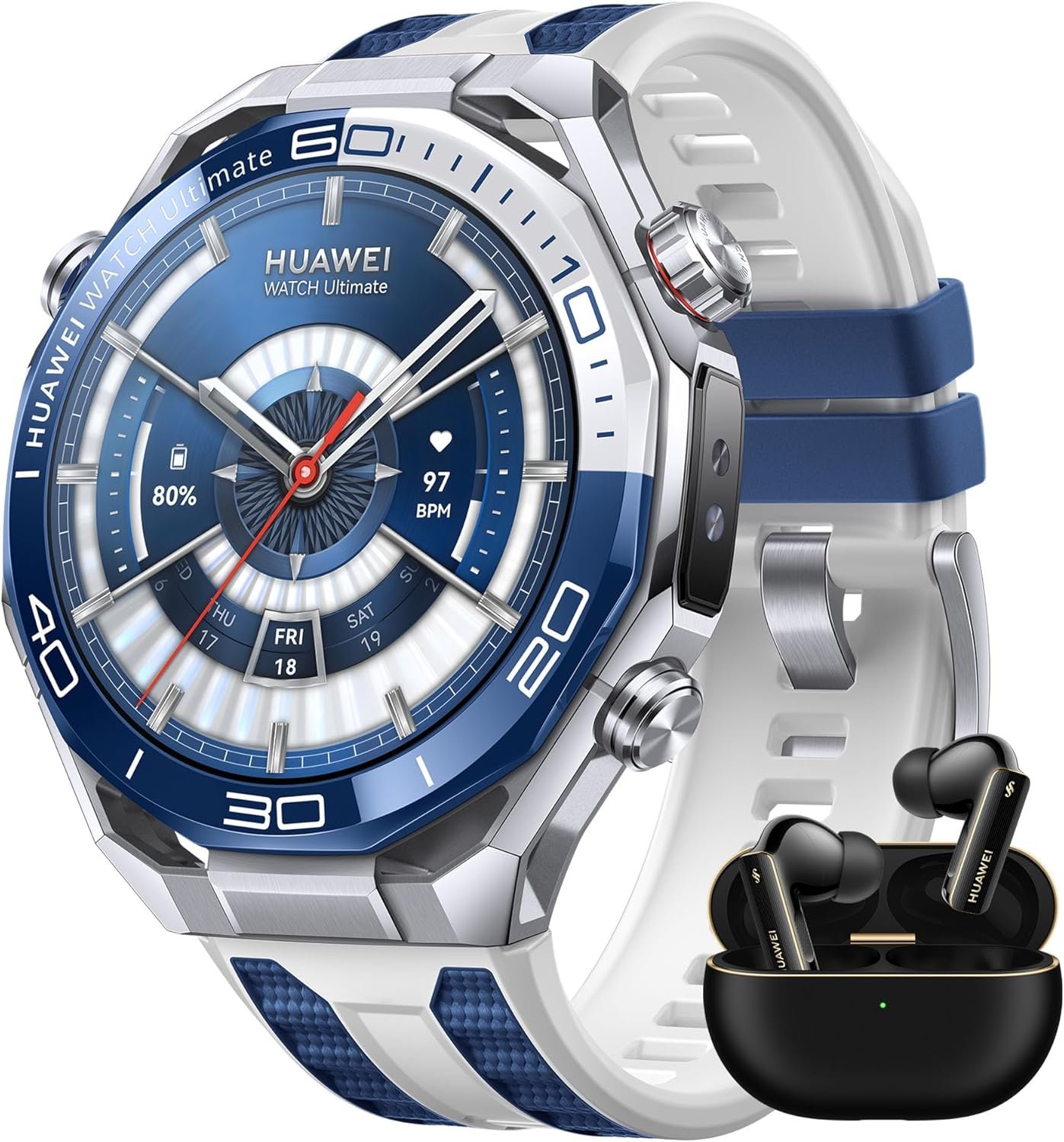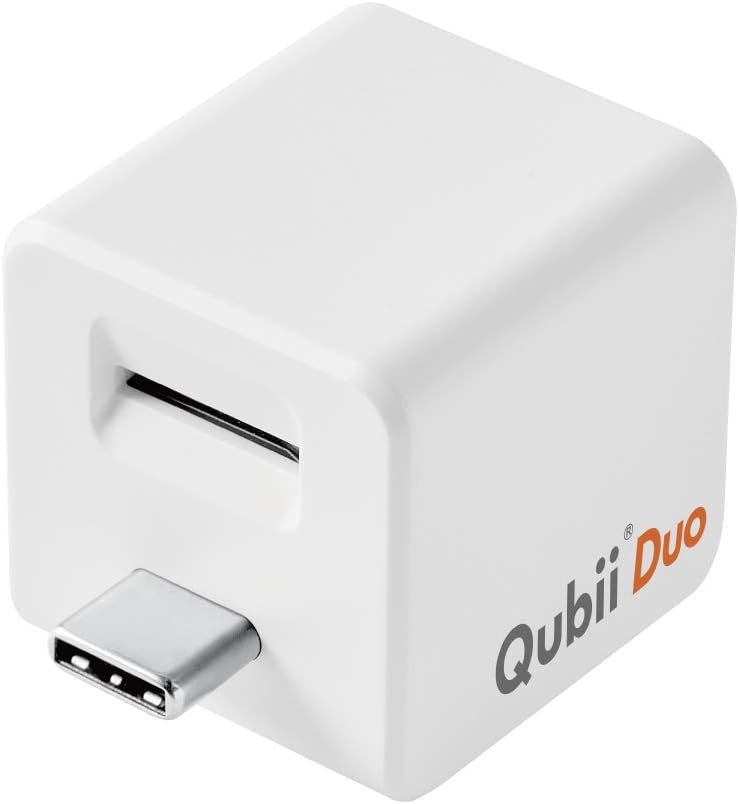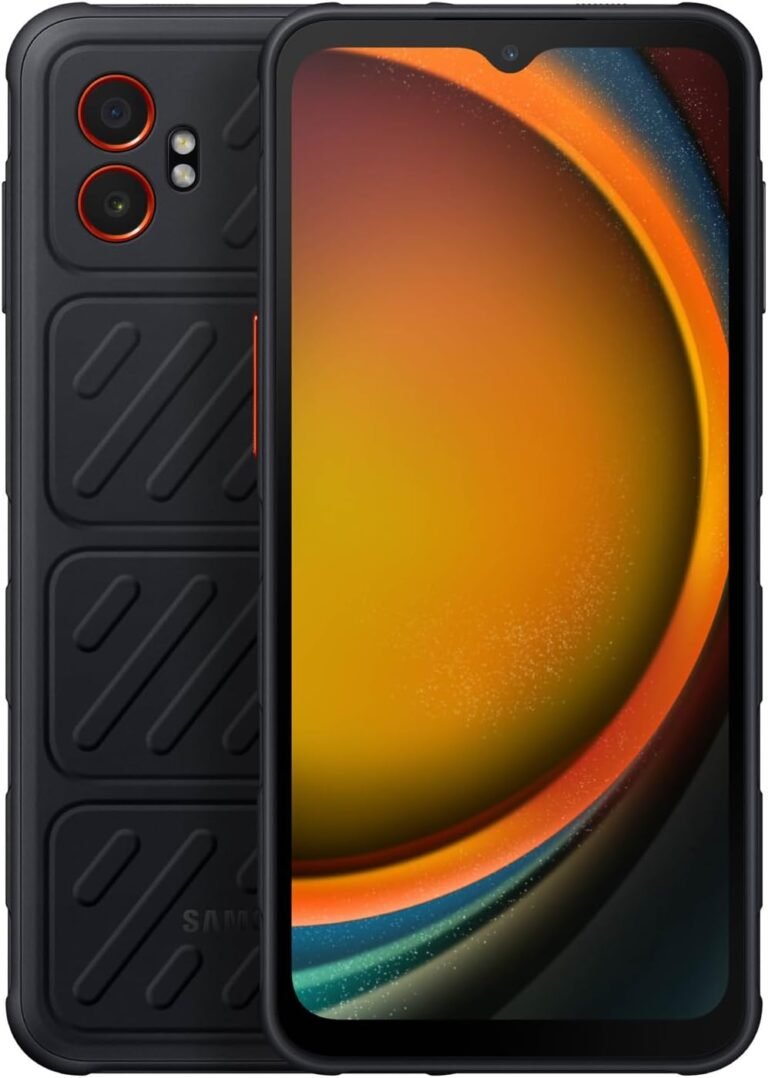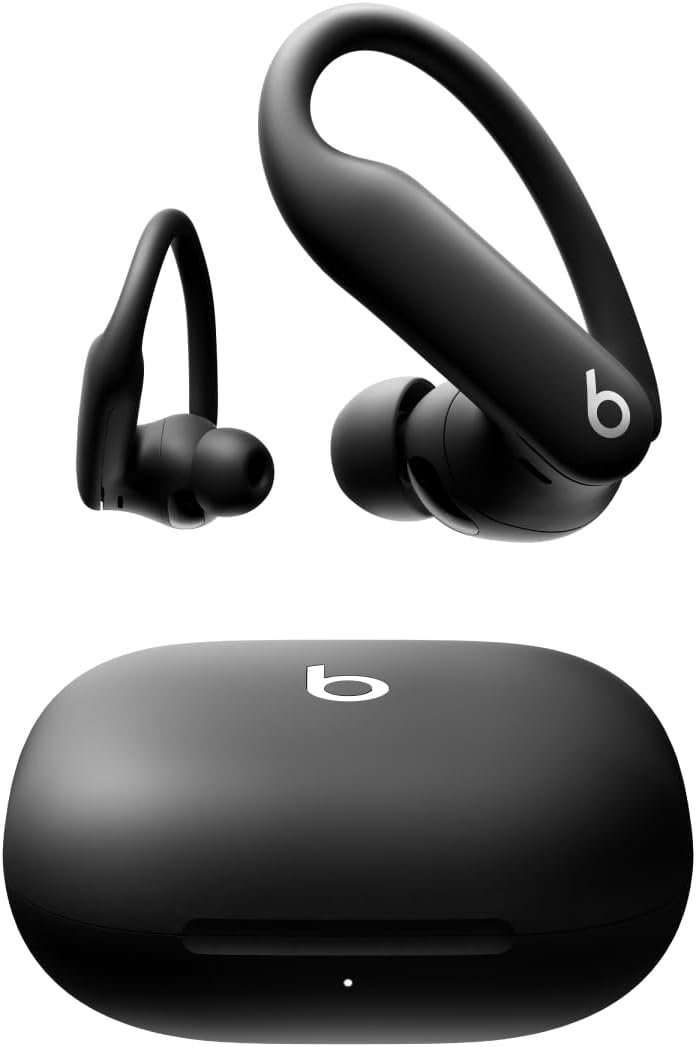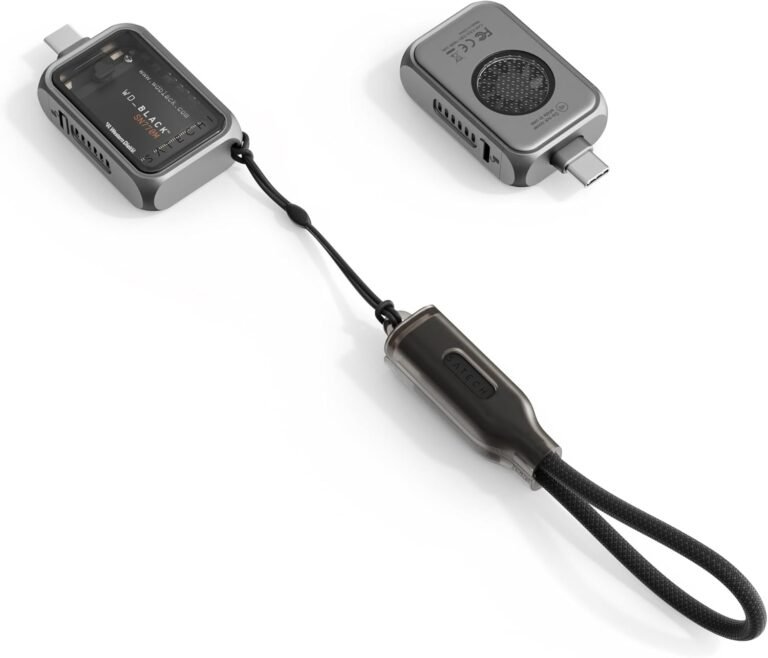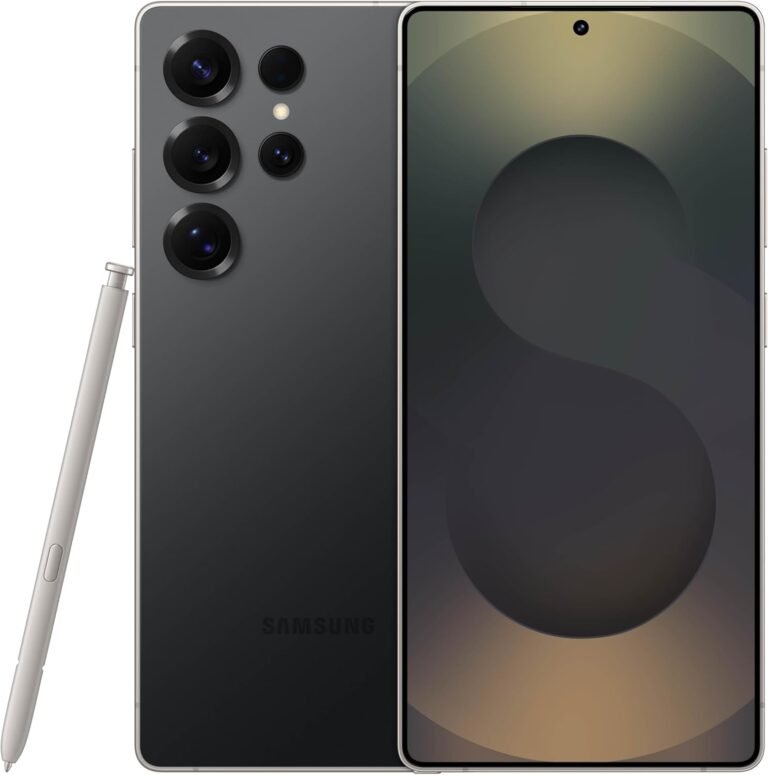Introduction
The Huawei Watch Ultimate 2 review begins with a device that redefines what premium smartwatches can accomplish in extreme environments. Positioned as Huawei’s flagship wearable for adventurers, professional athletes, and diving enthusiasts, this timepiece combines cutting-edge materials with serious functionality. What immediately distinguishes this smartwatch from competitors is its 150-meter dive rating paired with underwater sonar-based communication technology, a feature rarely seen outside specialized dive computers. The display pushes brightness to 3500 nits, ensuring readability under direct sunlight or underwater. Built from zirconium-based liquid metal, nanocrystal ceramic components, and sapphire crystal glass, the Watch Ultimate 2 targets users who demand both elegance and resilience. This isn’t merely a fitness tracker with water resistance; it’s engineered for genuine underwater exploration, high-altitude expeditions, and daily wear without compromise.
Huawei has positioned this model to serve dual purposes: a luxury timepiece for everyday situations and a technical instrument for specialized activities. The inclusion of eSIM calling capability, advanced health sensors, extensive GPS capabilities, and compatibility with both Android and iOS ecosystems broadens its appeal beyond niche athletic markets. Understanding the Huawei Watch Ultimate 2 specs and features requires examining each component individually, as the engineering choices reveal priorities that differ from mainstream smartwatch design philosophy.
Design & Build Quality
The physical construction of the Huawei Watch Ultimate 2 immediately communicates its premium positioning and functional intent. The black version measures 48.5mm × 48.5mm with a thickness of 12.9mm, while the blue variant measures slightly smaller at 47.8mm × 47.8mm × 12.9mm, creating substantial wrist presence without crossing into unwieldy territory. Weighing approximately 80.5 grams excluding the strap, the device feels solid rather than heavy, largely due to intelligent material distribution. The bezel and portions of the case utilize zirconium-based liquid metal, an amorphous alloy that offers hardness comparable to ceramics while maintaining metal’s flexibility and workability. The black edition uses black zirconium-based liquid metal for the front case, while the blue edition employs steel zirconium-based liquid metal. This material choice provides scratch resistance significantly superior to stainless steel while reducing weight compared to traditional titanium constructions.
The crown and button configuration follows practical logic. A rotating crown sits at the upper right position, providing tactile feedback for menu navigation and measurement adjustments. Two additional buttons flank the watch at upper left and bottom right positions, customizable for quick access to specific functions like workout modes or dive settings. The crown’s ridged texture ensures grip even when hands are wet or gloved, addressing real-world usage scenarios that luxury-focused designs sometimes overlook.
Sapphire crystal glass protects the display surface, ranking 9 on the Mohs hardness scale. This places it just below diamond in scratch resistance, effectively immune to damage from keys, coins, or accidental contact with rock surfaces during climbing. The crystal extends slightly above the bezel, maximizing display visibility while the surrounding liquid metal provides impact protection. Anti-reflective coating applied to the sapphire reduces glare without compromising the material’s inherent clarity.
The case back employs nanocrystal ceramic materials with precisely machined sensor windows. Ceramic’s hypoallergenic properties and resistance to corrosion from saltwater or sweat make it ideal for prolonged skin contact. The sensor array includes multiple monitoring points for accurate readings. Four charging pins sit recessed into the case back, protected from environmental exposure when not actively charging.
Strap options include fluoroelastomer rubber designed for diving and outdoor activities. The black edition includes a black fluoroelastomer strap with an extra-long variant in the packaging. The blue edition comes with a blue and white fluoroelastomer strap, plus both an extra-long fluoroelastomer strap and a titanium strap for formal occasions. The straps feature deployment clasps with adjustments to accommodate wrist sizes from 140mm to 210mm, handling wetsuit sleeves or forearm swelling during workouts. Quick-release spring bars allow tool-free strap changes.
Water resistance certifications include IP68 (dust and water ingress protection), IP69 (high-pressure, high-temperature water jets), and 20 ATM pressure rating. The dust-tight rating achieves IP6X. The 150-meter diving certification indicates rigorous testing beyond standard water resistance, involving pressure cycling, temperature extremes, and impact testing with submerged conditions. Seals around the crown and buttons undergo specific validation for underwater operation rather than passive submersion.
The overall aesthetic balances technical purpose with refinement. Brushed and polished surfaces create visual interest without unnecessary embellishment. Button guards prevent accidental activation without requiring covers that would complicate underwater use. The design avoids trends, instead prioritizing timeless functionality, appropriate for a device intended to withstand years of demanding use across diverse environments.

Display
The 1.5-inch LTPO 2.0 AMOLED display represents one of the Huawei Watch Ultimate 2’s most impressive technical achievements. With a resolution of 466 × 466 pixels, the panel delivers approximately 310 pixels per inch, creating text and graphics that appear crisp even during close inspection. The circular display maximizes usable screen real estate while maintaining the traditional watch form factor that many users prefer over square or rectangular alternatives.
LTPO 2.0 (Low-Temperature Polycrystalline Oxide) backplane technology enables variable refresh rates, dynamically adjusting between 1Hz and 60Hz based on content requirements. This second-generation LTPO technology offers improved power efficiency over the original version. Static watch faces or text pages operate at minimal refresh rates, conserving battery, while animations and scrolling interactions ramp up to 60Hz for smooth responsiveness. This adaptive behavior contributes significantly to the Huawei Watch Ultimate 2 battery life figures discussed later.
Peak brightness reaches 3500 nits, placing this display among the brightest in the consumer electronics category. For context, most premium smartphones peak between 1000 and 2000 nits, while competing smartwatches typically max out around 2000 nits. This extraordinary brightness serves specific purposes beyond spec-sheet bragging rights. Under direct equatorial sunlight, tropical beach conditions, or high-altitude snow environments where reflected light compounds visibility challenges, the display remains clearly legible without requiring shade or manual positioning. Underwater, where light rapidly diminishes with depth, the high brightness output compensates for water’s light-absorbing properties, maintaining readability at depths where conventional displays become nearly invisible.
Color reproduction follows typical AMOLED characteristics with vibrant saturation and deep blacks achieved through pixel-level illumination control. The display doesn’t appear oversaturated or cartoonish; color science leans toward pleasing accuracy rather than exaggerated punch. Viewing angles remain stable across approximately 170 degrees, with only minimal color shifting at extreme angles, important when checking the watch during activities where wrist positioning varies constantly.
Touch responsiveness accommodates both dry finger input and wet glove operation. Sensitivity adjustments available in settings allow users to prioritize accidental touch prevention or maximize responsiveness based on activity. Underwater, capacitive touch functionality naturally degrades, which is why Huawei implemented physical button controls for dive mode operations. The crown and buttons provide all essential navigation when submerged, with touch serving as a convenience feature during surface intervals.
Always-On Display functionality leverages the LTPO technology’s low-power states, showing simplified watch faces with critical information (time, date, step count, heart rate) without requiring wrist raise or button press. Power consumption in always-on mode remains modest due to the 1Hz refresh rate and intelligent pixel management that illuminates only necessary display elements against black backgrounds. Users can schedule always-on periods or disable the feature entirely to maximize battery longevity during extended expeditions.
The display’s cover glass sits flush with the bezel rather than recessed, creating a unified front surface that enhances immersion and reduces dirt accumulation around edges. This design choice does expose more glass surface to potential impact, which the sapphire crystal’s hardness addresses. Anti-fingerprint oleophobic coating applied to the crystal reduces smudge accumulation, maintaining clarity between cleanings, particularly valuable given the display’s brightness can highlight fingerprint oils.
Performance & Sensors
Internal performance determines how effectively the Huawei Watch Ultimate 2 features translate to actual user experience. While Huawei doesn’t publicly detail the specific chipset model, real-world operation indicates processing power sufficient for smooth interface navigation, rapid app launching, and lag-free sensor data processing. Menu scrolling exhibits consistent frame rates without stuttering. Workout mode transitions happen instantaneously. Notification delivery shows no perceptible delay from paired smartphones. The watch also includes Nearlink support, Huawei’s proprietary wireless communication protocol designed for improved connectivity and reduced power consumption.
The sensor suite represents where this smartwatch’s true capabilities emerge. An ECG (electrocardiogram) sensor enables medical-grade heart rhythm monitoring, detecting irregular heartbeats including atrial fibrillation. Unlike basic heart rate monitoring, ECG measures the heart’s electrical activity through precise timing of cardiac cycles, providing data valuable for detecting arrhythmias. The implementation requires users to touch the watch crown while the case back sensors make skin contact, creating a circuit that captures electrical signals. Results appear within 30 seconds, exportable as PDFs for physician review.
Optical heart rate monitoring operates continuously through photoplethysmography (PPG), using LED lights and photodiodes to detect blood volume changes in capillaries. The Huawei Watch Ultimate 2 employs an advanced PPG array with multiple LEDs and sensors, improving accuracy during movement and in darker skin tones where single-source systems often struggle. Heart rate data feeds into numerous health features: resting heart rate trends, heart rate variability analysis, abnormal heart rate alerts, and workout intensity zones. HUAWEI TruSleep technology monitors sleep quality throughout the night, analyzing sleep stages and providing actionable insights for improvement.
Blood oxygen saturation (SpO₂) monitoring uses similar optical principles but with different wavelengths to measure oxygen-carrying hemoglobin versus deoxygenated hemoglobin. Continuous SpO₂ tracking during sleep helps identify breathing disturbances potentially indicating sleep apnea. Manual spot checks provide immediate readings useful for high-altitude acclimatization monitoring or general health assessment.
Skin temperature sensors provide baseline temperature measurements, tracking changes that may indicate fever onset, menstrual cycle phases, or stress responses. While not a substitute for medical thermometers, trending data offers insights into physiological patterns over time.
The barometric altimeter measures atmospheric pressure changes to calculate elevation gain and loss. This sensor proves essential for hiking, mountaineering, and trail running where elevation data contextualizes workout intensity beyond simple distance metrics. Pressure trends also enable basic weather forecasting. Rapid pressure drops often precede storm systems, valuable information during backcountry activities.
The depth sensor specifically supports diving activities, accurately measuring underwater depth up to 150 meters. This dedicated sensor works in conjunction with the barometric altimeter to provide precise depth readings critical for dive safety and planning.
An X-TAP sensor adds unique functionality, likely enabling specialized touch or pressure-sensitive features for underwater or gloved operation. An accelerometer and gyroscope handle motion tracking, step counting, fall detection, and activity recognition. Fall detection can trigger emergency alerts if the wearer experiences a significant impact followed by no movement. Compass functionality relies on a magnetometer, providing directional bearings for navigation features. Combined sensor fusion (integrating GPS, compass, accelerometer, and gyroscope data) produces route tracking and navigation accuracy greater than any single sensor achieves independently.
GPS functionality includes five positioning systems: GPS (United States), GLONASS (Russia), Galileo (European Union), BeiDou (China), and QZSS (Japan). Dual-band operation on L1 and L5 frequencies improves accuracy in challenging environments. The L1 band works with all five systems (GPS + GLONASS + GALILEO + BeiDou + QZSS), while the L5 band supports GPS + GALILEO + BeiDou + QZSS. L5 signals, being newer civilian GPS bands, offer better penetration through tree canopy and urban canyons where L1-only systems lose lock. Huawei markets this as the Sunflower Positioning System, emphasizing the multi-constellation, dual-frequency approach for superior outdoor navigation. Real-world GPS tracks in forests, mountains, and cities show tighter accuracy than single-band competitors, with less erratic drift and faster satellite acquisition after starting workouts.
Connectivity spans multiple protocols. Bluetooth 5.2 provides stable connection to smartphones with improved range and lower power consumption than older versions. Wi-Fi 6 (802.11ax) support on both 2.4 GHz and 5 GHz bands enables direct internet connectivity when configured with networks, allowing notification sync, app updates, and cloud data uploads without phone proximity. The watch supports IEEE 802.11a/b/g/n/ac/ax protocols with 1×1 antenna configuration. NFC handles contactless payments where supported by regional payment systems, though availability varies by market and bank participation.
A standout connectivity feature is eSIM support, enabling the watch to make and receive phone calls independently without a paired smartphone nearby. With AI noise cancellation technology, call quality remains clear even in windy or noisy environments. Users can maintain a 2-hour LTE connection and 22-hour Bluetooth connection with a phone per day under typical usage scenarios. This cellular independence transforms the watch from a smartphone accessory into a standalone communication device for runs, swims, or situations where carrying a phone proves impractical.
The seamless integration between sensors, processors, and connectivity creates a responsive ecosystem. Heart rate spikes during workouts trigger automatic workout detection. GPS tracking begins while you’re lacing shoes. Health data syncs to smartphones whenever connection exists, eliminating manual intervention. This invisible orchestration defines premium smartwatch experiences, technology receding into transparent utility.
Battery Life
The Huawei Watch Ultimate 2 battery life specifications reveal a complex picture shaped by feature usage, connectivity modes, and activity profiles. The 867mAh silicon-carbon battery provides significantly higher capacity than the previous generation’s 530mAh cell, offering improved energy density and overall capacity. Understanding battery performance requires examining each usage scenario individually, as consumption varies dramatically based on active features.
When paired with an Android phone in standard mode, the watch delivers approximately 4.5 days of operation with typical use. This scenario assumes factory default settings, 2 hours of LTE connection and 22 hours of Bluetooth connection with a phone daily, continuous heart rate monitoring, HUAWEI TruSleep enabled at night, 2 ECG measurements per day, 60 minutes of app usage weekly, 30 minutes of Bluetooth calling weekly, 30 minutes of Bluetooth music playback weekly, 90 minutes of average weekly exercise, message notifications enabled (50 messages, 6 calls, and 3 alarms daily), and the device screen turned on 200 times per day.
With Always-On Display enabled while paired with Android in standard mode, battery life reduces to approximately 3 days under the same typical usage conditions described above.
When paired with an iPhone in standard mode, battery life drops to approximately 3.5 days with typical use. The reduced longevity stems from iOS’s more restrictive background app policies and Bluetooth communication protocols. Huawei’s optimization for Android ecosystems, particularly Huawei smartphones, shows more efficient data syncing and notification handling.
With Always-On Display enabled while paired with iPhone in standard mode, battery life further reduces to approximately 2.5 days with typical use.
Battery saver mode dramatically extends longevity. Under light usage conditions with battery saver enabled, the watch operates approximately 11 days. This conservative profile uses factory default settings with battery saver mode enabled, 30 minutes of Bluetooth calling weekly, 30 minutes of Bluetooth music playback weekly, continuous heart rate monitoring, HUAWEI TruSleep at night, 90 minutes of average weekly exercise, message notifications enabled (50 messages, 6 calls, and 3 alarms daily), and the device screen turned on 200 times per day.
Battery saver mode with typical usage extends to approximately 6 days. This includes 2 hours of LTE connection and 22 hours of Bluetooth connection with a phone daily, 30 minutes of Bluetooth calling weekly, 30 minutes of music playback weekly, continuous heart rate monitoring, HUAWEI TruSleep at night, stress monitoring enabled, sleep breathing awareness features enabled, 180 minutes of average weekly exercise, message notifications enabled (50 messages, 6 calls, and 3 alarms daily), and the device screen turned on for a total of 30 minutes per day.
With battery saver mode and Always-On Display both enabled, battery life reaches approximately 4 days under the typical usage conditions described for battery saver mode.
Dive mode battery specifications address the power-intensive underwater features. With sonar communication disabled, dive mode operates approximately 18 hours. This duration accommodates multiple recreational dives across several days with surface intervals. With sonar communication actively transmitting and receiving underwater messages, battery life reduces to approximately 12 hours. The sonar system’s power requirements (generating acoustic signals powerful enough to propagate through water) consume substantial energy. These figures reflect the physical constraints of underwater acoustic communication.
Expedition mode, optimized for multi-day backcountry adventures, delivers approximately 40 hours. Testing conditions include factory default settings with Expedition enabled, 30-minute positioning interval, Raise to wake enabled (60 screen-ons per hour), 5 marks per hour, Dim after sunset enabled, and Route back enabled. This mode reduces sensor sampling frequencies and extends GPS tracking intervals, recording waypoints periodically rather than continuously. Expedition mode suits thru-hiking, mountaineering expeditions, or extended wilderness trips where daily charging proves impossible.
Trail running mode with continuous GPS tracking and typical sensor activity operates approximately 22 hours. Testing conditions include factory default settings with 60 screen-ons per hour. Ultramarathon runners, multi-day stage races, or extended training days fall within this window.
Golf mode extends to roughly 24 hours, approximately 4 rounds. Testing conditions include factory default settings with 60 screen-ons per hour and 4 to 5 hours per round. GPS course mapping remains active throughout, providing distance measurements and hazard information. Golfers can confidently use GPS features throughout tournament weekends without mid-round charging.
Operating temperature considerations affect battery performance. The watch works best between 0°C and 35°C. Low temperatures can reduce battery life or performance, while high temperatures may cause the watch to turn off for safety. For skin contact wearing, the device tolerates negative 20°C to positive 55°C. During diving, operational temperatures range from 0°C to 38°C. For eSIM calls, the recommended temperature range is 0°C to 35°C. Storage temperature spans negative 20°C to positive 55°C.
Charging uses Huawei’s WATCH Wireless SuperCharger (2nd generation), included with the watch. The magnetic charger requires proper alignment with the case back. Charger voltage and current requirements specify 5V to 10V DC/2A MAX. Complete charging times weren’t officially specified, but wireless charging typically requires 90 to 120 minutes for full charge from empty. The proprietary charger dependence means lost cables require replacements directly from Huawei.
Real-world battery management requires understanding personal usage patterns. Outdoor enthusiasts conducting GPS-intensive activities benefit from pre-activity charging and potentially portable battery banks for multi-day expeditions. Office professionals with moderate fitness tracking easily achieve claimed multi-day battery life. Divers should plan charging between diving days unless limiting dives to avoid multi-dive depletion. The improved silicon-carbon battery chemistry provides substantial advantages over the previous generation, delivering longer runtime despite increased feature sets and brighter displays.

Diving & Outdoor Features
The 150-meter dive certification establishes the Huawei Watch Ultimate 2 as legitimate dive instrumentation rather than merely water-resistant. This depth rating exceeds recreational diving limits (typically 40 meters) and approaches technical diving depths where specialized training, equipment, and gas mixtures become necessary. Achieving this certification requires pressure testing according to EN13319 and ISO 22810:2010 standards, including testing to 150% of rated depth, thermal shock testing between temperature extremes while submerged, and button operation testing underwater to verify seals maintain integrity during use.
The dive computer functionality includes essential metrics: current depth measured by the dedicated depth sensor, dive time, water temperature, and ascent rate monitoring. No-decompression limit tracking calculates remaining bottom time before decompression stops become necessary, critical information for preventing decompression sickness. Ascent rate warnings alert divers exceeding safe ascent speeds, helping prevent lung overexpansion injuries and nitrogen bubble formation. Safety stop timers prompt recommended shallow depth pauses before surfacing.
Dive log functionality records every dive with detailed metrics: maximum depth, dive duration, water temperature ranges, and GPS surface location markers. Post-dive, logs sync to the Huawei Health app, enabling analysis of depth profiles, ascent/descent rates, and bottom time consumption patterns. This data proves valuable for improving buoyancy control, air consumption efficiency, and dive planning accuracy.
The sonar-based underwater communication system represents genuine innovation in consumer dive technology. Huawei markets this as the world’s first smartwatch with underwater sonar messaging at 150-meter depth capability. Sound travels efficiently through water, approximately four times faster than through air, making acoustic communication more practical underwater than radio or light-based systems. The watch can transmit and receive simple messages through sonar pulses, enabling diver-to-diver communication within range depending on water conditions, depth, and acoustic interference.
Preprogrammed messages include common dive signals: “OK,” “Need help,” “Low on air,” “Going up,” “Going down,” and “Stay together.” Custom message creation allows dive teams to establish additional signals relevant to specific dive objectives. Receiving sonar messages triggers vibration alerts and displays message content immediately. Response options appear on-screen, allowing quick acknowledgment without surfacing or abandoning tasks.
The watch also features diving SOS capability, enabling emergency distress signals through sonar when divers encounter dangerous situations underwater. This safety feature can alert nearby divers or surface support when verbal or visual communication proves impossible.
Practical applications extend beyond emergency communication. Dive teams can coordinate depths, discuss route choices at underwater decision points, or share observations about marine life or conditions without physical proximity required for hand signals. Photography teams coordinate subject approaches and lighting angles. Instructors communicate with students beyond visual range in murky water. The system doesn’t replace proper dive planning or buddy procedures but supplements communication options during dynamic underwater situations.
Water resistance certifications beyond diving capability include IP68 (submersion up to 1.5 meters for 30 minutes minimum) and IP69 (protection against high-pressure, high-temperature water jets). IP69 testing involves spraying the device from multiple angles with 80°C water at 80 to 100 bar pressure, simulating industrial cleaning scenarios or exposure to boat deck washdown. The dust-tight rating of IP6X ensures complete protection against dust ingress. These ratings ensure the watch survives incidental water exposure outside dedicated diving (shower wear, swimming pool training, kayaking, surfing, or caught in rainstorms).
The 20 ATM pressure rating (20 atmospheres, equivalent to 200 meters depth pressure) technically exceeds the dive certification depth. This discrepancy reflects testing methodology differences: static pressure testing versus dynamic diving certification including temperature changes, button operation, and seal longevity factors. Users should respect the 150-meter dive certification as the functional limit rather than assuming 200-meter capability. Huawei explicitly recommends rinsing and soaking the device in fresh water and wiping it dry after using it in ocean water, as water resistance is not permanent and performance may deteriorate with daily wear and tear. Regular inspection and maintenance at authorized Huawei Customer Service Centers is recommended.
Materials selection specifically addresses saltwater corrosion challenges. Zirconium-based liquid metal resists corrosion from saltwater exposure significantly better than stainless steel. Nanocrystal ceramic case back components similarly resist corrosion while avoiding metal allergies some divers experience with prolonged saltwater exposure. Post-dive rinsing with fresh water remains recommended maintenance, though the materials tolerate neglected salt residue better than conventional metals.
Beyond diving, outdoor features serve mountaineering, trail running, and expedition activities. The barometric altimeter tracks cumulative elevation gain during hikes, provides current altitude information, and monitors atmospheric pressure trends for weather forecasting. The Sunflower Positioning System with dual-band, five-constellation GNSS ensures accurate location tracking even in challenging environments with tree cover or canyon walls. Sunrise and sunset times adjust automatically based on GPS location, helping outdoor enthusiasts plan activities around daylight availability.
Route navigation features allow importing GPX files from mapping software, displaying turn-by-turn navigation on the watch. Breadcrumb trail recording creates return routes automatically, valuable for off-trail exploration where getting lost poses serious risks. Waypoint marking saves specific locations (camp, water sources, scenic viewpoints) for future navigation reference. The Route back feature in Expedition mode ensures adventurers can retrace their steps to starting points.
Storm alerts monitor rapid barometric pressure drops, warning users of approaching weather systems. In mountains where afternoon thunderstorms pose lightning risks, advance warning enables retreat to safer elevations or sheltered positions before storms arrive. This functionality complements weather forecast checking but provides localized real-time pressure monitoring that forecasts sometimes miss.
Golf enthusiasts benefit from HD golf course maps with detailed hole layouts, hazard locations, and distance measurements. The 24-hour battery life in golf mode ensures coverage for multiple rounds without charging interruptions. Course maps provide strategic information for club selection and shot planning.
The combination of genuine dive computer functionality, sonar communication with SOS capability, comprehensive outdoor navigation through the Sunflower Positioning System, and specialized activity modes positions this smartwatch as serious expedition equipment. This isn’t casual water resistance enabling pool swimming; it’s instrumentation for environments where equipment failure carries genuine consequences.
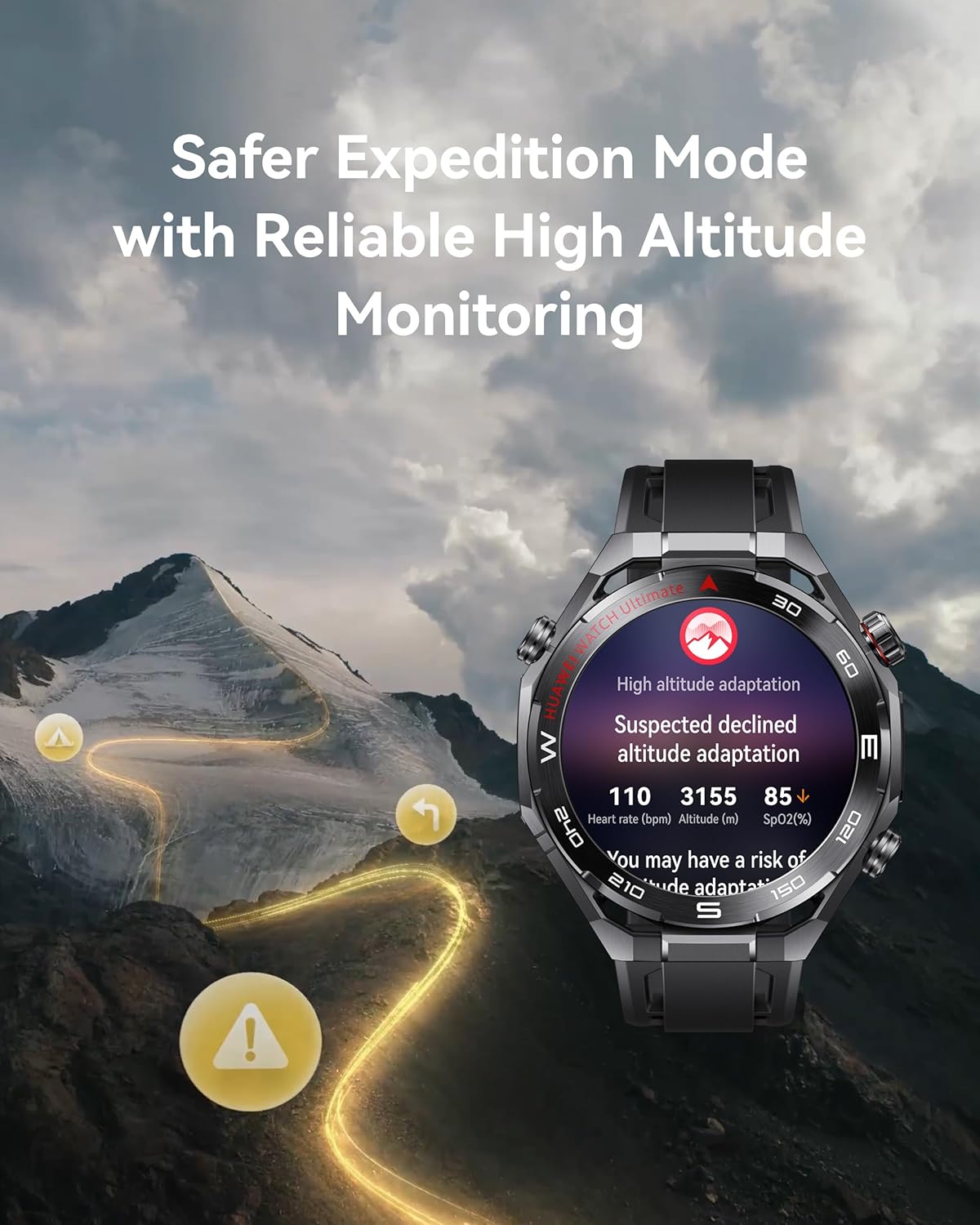
Health & Fitness Tracking
Health monitoring capabilities position the Huawei Watch Ultimate 2 as comprehensive wellness tracking beyond basic step counting. The ECG functionality, already described in sensor coverage, provides medical-grade cardiac rhythm analysis. Irregular heart rhythm alerts notify users of potential arrhythmias detected during passive monitoring, prompting medical consultation before symptoms become acute. Heart rate variability (HRV) tracking measures time variation between heartbeats, an indicator of autonomic nervous system function and overall stress levels. Higher HRV generally indicates better cardiovascular fitness and stress resilience, while declining HRV may signal overtraining, illness, or excessive stress.
Continuous heart rate monitoring enables resting heart rate calculations, the average heart rate during sleep or quiet resting periods. Resting heart rate trends over weeks and months indicate cardiovascular fitness improvements (decreasing resting heart rate) or potential illness or overtraining (increasing resting heart rate). Maximum heart rate detection during workouts helps establish accurate training zones rather than relying on age-predicted formulas that vary significantly between individuals.
Blood oxygen saturation monitoring during sleep identifies breathing disturbances. The sleep breathing awareness feature specifically tracks SpO₂ patterns throughout the night. Repeated SpO₂ drops below 90% suggest sleep apnea, breathing pauses during sleep that reduce oxygen delivery. Sleep apnea screening identifies individuals who should pursue formal sleep studies and potential CPAP therapy. At altitude, SpO₂ monitoring tracks acclimatization, helping climbers and trekkers recognize insufficient adaptation requiring descent or rest before ascending higher.
Skin temperature tracking establishes personalized baselines, detecting deviations that may indicate fever onset, menstrual cycle phases affecting basal body temperature, or stress responses. Temperature trends combined with resting heart rate and HRV create comprehensive wellness snapshots identifying developing issues before symptoms become obvious.
HUAWEI TruSleep technology provides advanced sleep tracking, analyzing sleep stages (light sleep, deep sleep, REM sleep) alongside sleep disruptions, time to fall asleep, and total sleep duration. The system enables detailed sleep quality assessment throughout the night. Sleep quality scores synthesize these metrics into digestible ratings, though users benefit from examining individual components rather than relying solely on overall scores. Recommendations for improving sleep hygiene appear based on detected patterns: consistent high sleep onset times prompt suggestions about pre-bed routines; fragmented sleep triggers advice about bedroom environment or evening caffeine consumption.
Stress monitoring combines heart rate variability, heart rate, and potentially skin temperature into stress level assessments throughout the day. Stress monitoring runs continuously when enabled, providing real-time awareness of stress patterns. High stress periods trigger breathing exercise prompts, guided inhale-exhale patterns designed to activate parasympathetic nervous system responses that counteract stress. While not replacing stress management therapy or addressing stress causes, breathing exercises provide immediate tools for acute stress reduction.
Workout tracking covers extensive activity types: running, cycling, swimming, hiking, climbing, skiing, rowing, elliptical, strength training, yoga, and dozens more. GPS-based activities record routes, pace, distance, and elevation changes using the advanced Sunflower Positioning System. Heart rate zones during workouts indicate training intensity, helping users balance easy recovery sessions with threshold and VO2 max development efforts. Training effect metrics estimate aerobic and anaerobic benefits from each workout, quantifying training stimulus.
Swimming tracking includes pool and open water modes. Pool swimming counts laps, identifies stroke types, calculates SWOLF scores (stroke count plus lap time, measuring efficiency), and estimates caloric expenditure. Open water swimming uses GPS tracking for distance and course mapping, though GPS accuracy inherently suffers with satellite signal attenuation through water. Position recording occurs during above-water arm phases. The 20 ATM and IP68/IP69 ratings ensure worry-free swimming in any conditions.
Running dynamics available through the watch’s sensors include cadence, ground contact time, vertical oscillation, and stride length estimates. These metrics help runners optimize form efficiency, reduce injury risk from overstriding, and improve performance through biomechanical awareness. The 22-hour trail running mode battery life supports ultramarathon distances and multi-day stage races.
The Huawei Health app serves as the central hub for data visualization, trend analysis, and coaching insights. The app interface presents daily activity summaries, workout details with maps and metrics, sleep quality analysis, weight tracking, and achievement badges for milestone accomplishments. Sharing capabilities allow posting workouts to social features, though privacy controls restrict what information becomes visible to others.
Third-party app integration remains limited compared to more open ecosystems. Huawei Health doesn’t natively sync to platforms like Strava, TrainingPeaks, or MyFitnessPal, requiring manual export-import workflows or third-party sync services. This ecosystem limitation frustrates users invested in other platforms but reflects Huawei’s strategy of maintaining users within its proprietary health ecosystem.
Workout accuracy comparison against dedicated sports watches shows competitive results for activities like running and cycling where GPS and heart rate provide primary metrics. The dual-band, five-constellation GNSS delivers excellent track accuracy in challenging conditions. Strength training automatic rep counting and exercise recognition prove less reliable (common across smartwatch platforms) with manual workout logging often producing more accurate records. Swimming metrics align well with lap counting and distance calculations in pool environments.
Caloric expenditure estimates incorporate heart rate, activity type, personal metrics (age, weight, gender), and movement intensity. While no consumer device achieves laboratory accuracy for calorie counting, estimates fall within reasonable ranges for dietary planning purposes. Users should view calorie numbers as relative indicators (harder workouts burn more calories) rather than precise measurements for precise calorie balancing.
Software & Compatibility
The Huawei Watch Ultimate 2 operates on HarmonyOS 5.1, Huawei’s proprietary operating system developed following restrictions on Google Mobile Services access. HarmonyOS shares some architectural similarities with Android but represents an independent platform with its own app ecosystem, security model, and user interface design language. The operating system feels smooth and responsive with quick animations and intuitive navigation patterns.
The interface emphasizes gesture navigation and edge-swipe actions. Swiping down from the top reveals quick settings (airplane mode, do not disturb, flashlight, find phone, and brightness adjustment). Swiping up from the bottom shows notifications from paired smartphones. Swiping right displays widget screens (activity summary, heart rate, weather, music controls) customizable based on user priorities. Swiping left typically returns to previous screens or menus.
The rotating crown provides primary navigation through menus and lists, offering tactile feedback and precise control without obscuring screen content with fingers. Pressing the crown returns to the watch face from any screen, a universal home button. The upper right crown button serves this navigation purpose, while the upper left button and bottom right button can be customized to launch specific apps or functions like workout quick-start menus.
For users in China, the watch supports BeiDou satellite messaging capabilities, enabling sending and receiving messages via satellite when no cellular or terrestrial network is available. This feature requires specific setup and operates through dedicated satellite connectivity infrastructure available in China. Users can access satellite messaging with a single button press, providing emergency communication options in remote areas without traditional network coverage. BeiDou satellite voice messaging represents an advancement over text-only satellite SMS, allowing voice message transmission through satellite connectivity.
Watch face selection includes numerous pre-installed options ranging from classic analog designs to data-rich digital displays. Third-party watch face availability through Huawei’s AppGallery adds customization options, though selection remains limited compared to more established ecosystems. Some watch faces support complications (small data displays showing heart rate, step count, weather, or calendar information) allowing users to prioritize specific metrics on their primary screen.
Smartphone compatibility spans both Android and iOS platforms. The watch requires Android 9.0 or later, or iOS 13.0 or later for pairing. Android pairing, particularly with Huawei smartphones, offers the most comprehensive feature set: full notification support including message replies, app installation through the Huawei Health app, and seamless data synchronization. Third-party Android smartphones (Samsung, Google Pixel, etc.) maintain most functionality though some Huawei-specific features may be limited.
iOS compatibility exists but with notable restrictions. Apple’s closed ecosystem prevents third-party devices from achieving feature parity with Apple Watch. Notification delivery works, displaying messages, calls, emails, and app alerts on the watch. However, replying to notifications directly from the watch isn’t supported on iOS. Users must retrieve their iPhone for responses. App installation and management through the Huawei Health iOS app provides access to watch functionality and settings.
Music control functions across both platforms, allowing users to play, pause, skip tracks, and adjust volume for music or podcasts playing on paired smartphones. Onboard music storage enables loading music files directly to the watch for phone-free workouts with Bluetooth headphones. Streaming service support is limited. Huawei’s music services work where available, but Spotify, Apple Music, and similar platforms lack dedicated watch apps.
With eSIM capability enabled, users can make and receive phone calls directly from the watch without smartphone proximity. AI noise cancellation ensures clear call quality even in windy or noisy outdoor environments. This cellular independence makes the watch functional as a standalone communication device during runs, swims, dives, or any situation where carrying a phone proves impractical.
Notification filtering allows users to select which apps trigger watch notifications, preventing constant interruptions from less important applications. Do Not Disturb modes silence notifications during specified periods (automatically during sleep hours or manually activated during meetings or focused work). Emergency contacts can be configured to break through Do Not Disturb, ensuring critical communications remain accessible.
Emergency SOS functionality requires setup of emergency contacts beforehand and ensures the watch is connected to a cellular network or via Bluetooth to a phone running HarmonyOS 2/Android 9.0/

Buy Now on Amazon
Purchase with fast delivery and secure checkout.

